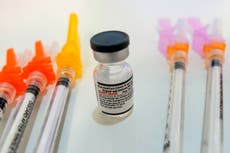Toxic ‘forever chemicals’ detected in school uniforms
PFAS have been linked to a long list of health issues, inlcuding cancer, birth defects, kidney disease, and decreased immunity

Toxic “forever chemicals” commonly used to make children’s clothing could pose a serious health hazard to wearers exposed to the compound, a new study has warned.
Chemicals such as per- and polyfluoroalkyl substances (PFAS) are used to make clothing and textiles resistant to water and stains.
PFAS are nicknamed “forever chemicals” because they are impossible to break down naturally and accumulate in both the environment and the human body.
They have been linked to cancer, birth defects, kidney disease, decreased immunity, reproductive problems, asthma, obesity, and neurodevelopmental or behavioural issues.
The study, published in the Environmental and Science Technology journal, detected “high” levels of PFAS in 65 per cent of school uniforms and other childrens’ garments, including snowsuits, rainsuits, bibs, hats, mittens and even pushchair covers tested.
According to several surveys in the United States, PFAS is frequently found in blood samples of children aged between three and 11. With around 20 per cent of public schools in the US having uniform requirements, the researchers now worry that the health of millions of children could be at risk.
The international team of researchers looked at 72 textile samples used in children’s school uniforms.
“What was surprising about this group of samples was the high detection frequency of PFAS in the garments required for children to wear,” says Graham Peaslee, a professor of physics at Notre Dame.
“Children are a vulnerable population when it comes to chemicals of concern, and nobody knows these textiles are being treated with PFAS and other toxic chemicals.”
The team tested the clothing using particle-induced gamma ray emission (PIGE) spectroscopy, a novel method that tests for the presence of fluorine, which has previously used to detect PFAS in cosmetics, fast food packaging, face masks, firefighting gear, and drinking water.
Flourine was detected in 65 per cent of samples tested. School uniforms had a higher amount of chemicals lingering on the fabric when they were made out of 100 per cent cotton rather than synthetics.
“There is no consumer option to purchase clothing that can be washed instead of clothing that comes coated with chemicals to reduce stains,” says Peaslee.
“We hope one of the outcomes of this work would be increased labeling of textiles to fully inform the purchaser of the chemicals used to treat the fabric prior to sale so consumers have the ability to pick garments that were not treated with chemicals for their children.”






Join our commenting forum
Join thought-provoking conversations, follow other Independent readers and see their replies
Comments